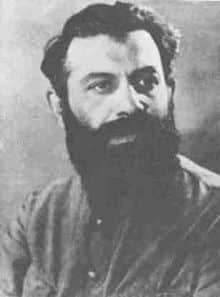In 1929, Joseph Stalin, the Communist leader, started a revolution that would transform the Soviet Union’s economy. A major aspect of the Stalin revolution consisted of the forced collectivization of agriculture. From 1929-1933, the collectivization drive met resistance, resulting in the liquidation of an estimated five million successful peasants called Kulaks.[1]
In 1978, Lev Kopelev published a series of memoirs recalling his experiences as a militant participant in the collectivization drive of agriculture.[2] Terror in the Countryside is a reflection that accurately describes the motivation and state of mind of Kopelev as a participant in Stalin’s collectivization drive.
Kopelev’s reflection begins with justification for why he was a participant in the collectivization drive. He believed that he and other participants were warriors fighting against the kulak sabotage of the five-year plan.[3] The five-year plan, created by Stalin, was intended to jump-start Soviet Union’s economy.
However, it met resistance successful peasants and therefore could not develop as proposed.[4] Kopelev states that the kulaks did not understand communism, thus they contributed greatly to the Soviet Union’s struggle for socialism. As a response to the actions of the kulaks, participants in the drive would tour the countryside looking for agricultural goods. One of the most extreme forms of coercion used against the kulaks was “undisputed confiscation”, in which a hut would be raided and in most cases stripped of everything.
Kopelev states that he was present at many of the raids and was entrusted to created inventories based on the confiscated items. He then reflects on the screaming voices of the women and the defeatist attitude of the fathers. He then asks himself “how could this all of happened? How could I have participated in it?”[5]
The following part of Kopelev’s reflection describes his motivation for participating in the collectivization drive. Kopelev states that he and many others were raised as believers in Stalin. To Kopelev, Stalin was the reliable and dependable high priest. He trusted in him unconditionally and had faith in his five-year plan.
Kopelev continues his argument by stating that he believed unconditional collectivization was necessary if the five-year plan was to succeed and that the ends justified the means. He states that in his mind the great overall goal was Communism and that he and other youthful Stalinist would stop at nothing to achieve it.[6]
Terror in the Countryside remains an accurate portrayal of a youthful Stalinist. Although written many years after the collectivization drive, Kopelev’s work provides valuable insight into the motivation and mindset of a militant participant in Stalin’s revolution. Kopelev states numerous times in his memoirs that he truly believed the ends justified the means.
This line by itself accurately answers Kopelev’s two questions: “how could this all of happened? And how could I have participated in it?”[7] Other participants in the drive had the same mindset and were all believers in the infallible Stalin. They wanted to achieve Communism because they believed it was great and they stopped at nothing to achieve it.
[1] Joseph Stalin. Liquidation of the Kulaks. (1929), in Sources of Western Tradition, 7th ed. Marvin Perry, Joseph
Peden, Theodore VonLaue (New York: Houghton Mifflin Company, 2008), 339
[2] Lev Kopelev. Terror in the Countryside. (1978), in Sources of Western Tradition, 7th ed. Marvin Perry, Joseph
Peden, Theodore VonLaue (New York: Houghton Mifflin Company, 2008), 341-343
[3] Kopelev, Terror in the Countryside, 341.
[4] Stalin. Liquidation of the Kulaks, 339.
[5] Kopelev, Terror in the Countryside, 342.
[6] Kopelev, Terror in the Countryside, 342.
[7] Kopelev, Terror in the Countyside, 342.

